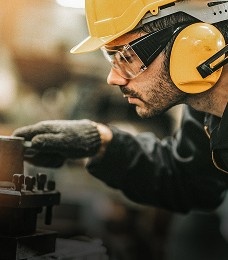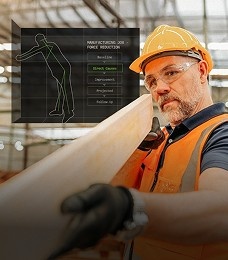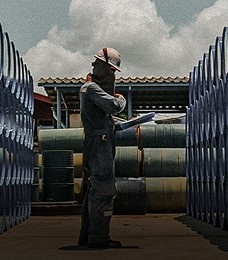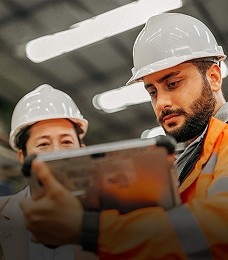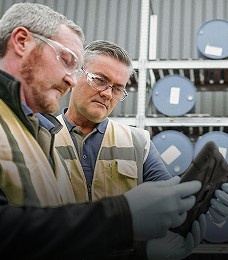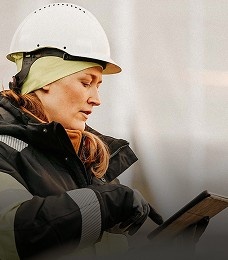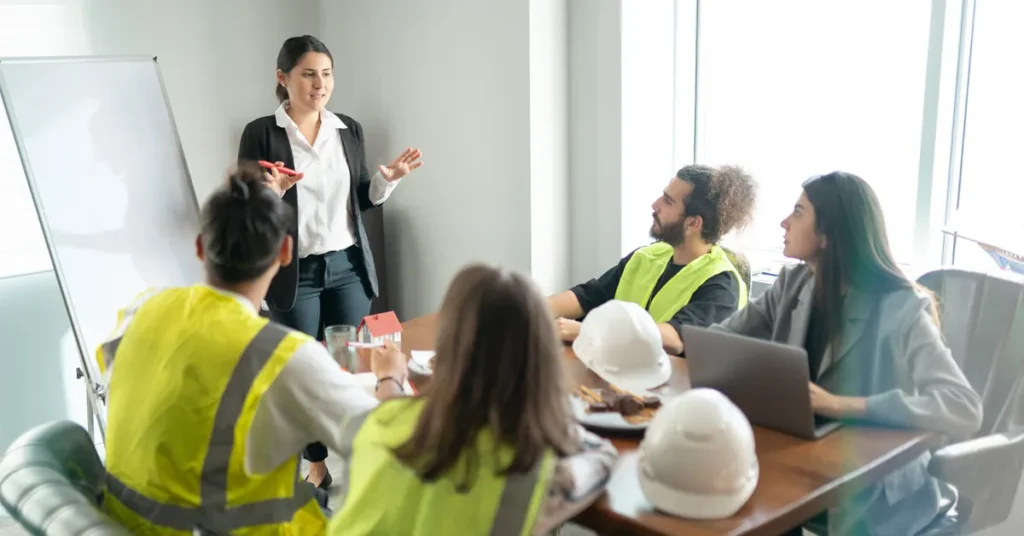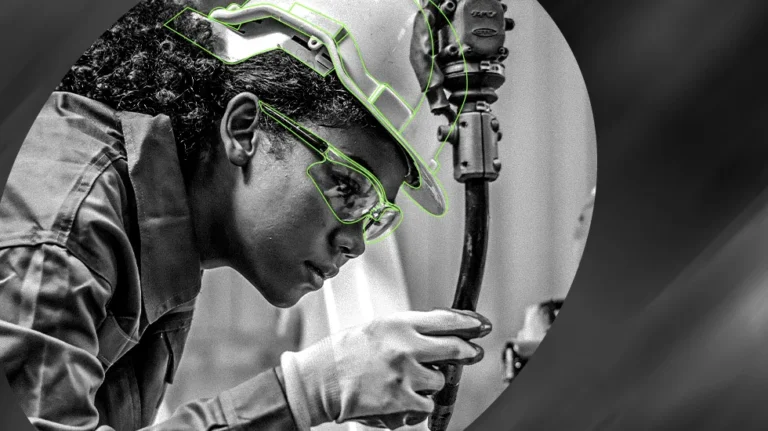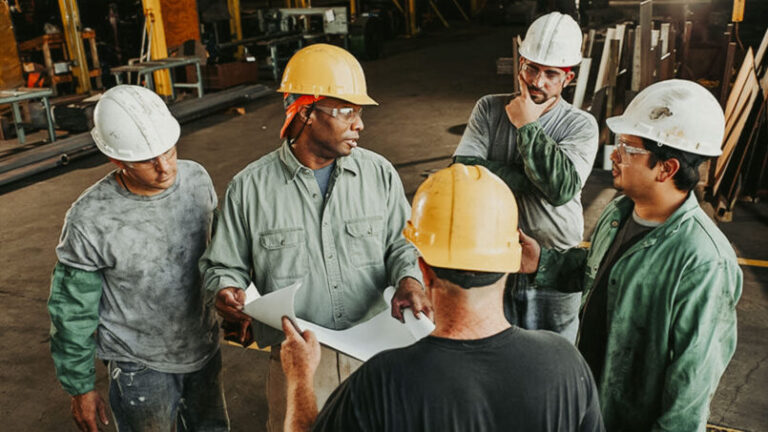In the evolving world of risk management, understanding where your organization stands on the maturity curve is crucial for advancing your safety systems.
At this year’s VelocityEHS User Conference, Jeff Sanford, Senior Global Enterprise Account Executive at VelocityEHS, moderated a panel discussion during, “Risk Management: Align Tactics to Each Point Along the Maturity Curve.” Featuring panelists Nancy Laurie, Occupational Health Manager at Wegmans Food Markets; Rahul Nair, HSE IT Strategy Leader at Cummins; and Willy Elizondo, Risk and Safety Administrator for the City of Goodyear, this conversation explored the journey from immature to mature safety processes.
The risk management “maturity curve” refers to the progression from a basic, reactive approach—where safety is defined by minimizing failures and managing incidents after they occur—to a more advanced, proactive stance, where the focus is on anticipating risks and preventing issues before they arise. In this paradigm, a mature approach to safety is not just about avoiding problems but ensuring that as many things as possible go right, viewing humans as valuable resources rather than liabilities.
The risk management maturity curve consists of four key stages:
- Reactive: Compliance-driven with safety managed mainly by a Safety Manager.
- Preventive: Increased awareness of risks and supervisor involvement.
- Proactive: Commitment to standards with a focus on practice, habits, and individual recognition.
- Advanced: Organizational pride, network contributions, and genuine care for others.
Before you read the following conversation, reflect on your current safety processes. Where does your organization stand on the maturity curve? What steps can you take to move from reactive safety management to advanced risk management? This discussion will provide insights into advancing your system and enhancing safety culture across your organization.
The following panel discussion has been condensed and edited for readership.
The Elements of Planning a Safety Process Before Executing
To begin the discussion, an audience member asked, “You’ve all been in a position where you’ve had to initiate a process from scratch. What do you feel are the elements to planning before executing? And, what is one thing you would tell someone that has found themselves in that same position?”
Nair: The biggest element is buy-in from every level of the organization. Specifically, middle management’s buy-in as they interact with multiple teams. The second-biggest element is communication; it’s a general concept, but it’s so important to continue communicating when things go wrong, or when red flags are seen before any incidents happen. The third-biggest element, specifically in our journey, is to ensure that you’re following any current processes. Find a balance between implementing new technology alongside the policies and processes that are already in place, ensuring that these three elements align with each other.
Laurie: One of the biggest things when you’re first starting off is to understand what gap you’re trying to close. What is your problem statement that you’re trying to solve with this project? Secondly, and probably even more important, is to identify your stakeholders. Understand their point of view on that gap that you’re trying to close. That’s going to help you build your requirements documents, which become your third thing, your guidance. You’ll you’re done when you have all the requirements laid out and have met them all. Over my career, I’ve learned that if you don’t have the right stakeholders at the table, and you didn’t hear what they truly needed and what requirements they have, your project could be set back months, if not years.
Elizondo: Having that buy-in is crucial. When I started, we had about 50 employees, and now we’re up to 1,800. One key aspect was getting buy-in, especially from our city manager. Early on, I had to sell the idea of dedicating just one hour a week to safety, despite initial skepticism about whether it was feasible. Over time, this hour became a crucial part of our routine, and now safety discussions are ingrained in our operations.
Advancing Ergonomics and Risk Management Programs with Diverse Teams and Roles
The second question in the discussion was for Nancy Lauire, specifically. “The unique environment at Wegmans means you lead teams of health and safety professionals for various entities involved in a grocery chain, from distribution to stocking shelves to cashiers and everything between. Can you share how you moved your ergonomics and risk program through that maturity curve?”
Laurie: You need to meet the business where it is currently to help it move up the curve. At Wegmans, each business unit—distribution, manufacturing, and stores—is at a different stage of maturity. There’s no one-size-fits-all approach to ergonomics across the company. I’ve learned that you need to meet each unit where it is, and introduce changes gradually. For example, we aimed for stores to complete 70% of incident investigations using paper forms in the first quarter, but they quickly exceeded this goal and are now ready for a new digital system. In stores, we started with basic steps, such as incident investigations, and are now moving towards more formal inspections and observations. Distribution centers, already advanced, are working on exoskeleton programs to improve ergonomics. For our engineers and designers, we focus on prevention through design. We’re still evolving and don’t have metrics for all areas, but we’re making progress one step at a time. We are working on educating senior leaders and refining our vision, but it’s an ongoing process of gradual improvement and communication.
Conducting Analyses to Define the Future Vision for Safety and Ergonomics
At this point in the discussion, a member of the audience posed the question, “I lead continuous improvement in my organization and recently took on supporting ergonomics with our new VelocityEHS system. In continuous improvement, my goal is to demonstrate what excellence looks like so others can follow the journey. Have any of you conducted similar analyses to define the future vision for safety and ergonomics in your organization?”
Nair: Over the past 20 years, we’ve used various tools and technologies to maintain a strong focus on safety and EHS improvements. Safety is a core company value, not just a priority, so it can’t be deprioritized. We’ve faced shifts in focus, such as the rise of ESG, sustainability, and behavior-based safety, but our main goal remains our public commitments—like achieving zero emissions by 2050 and reducing emissions by 50% by 2030. Despite these challenges, we generally meet our goals by setting clear targets and tracking progress through our project pipeline. However, the journey is not always smooth; it involves bumps and learning opportunities. For instance, while our robust program has been effective for years, change management remains a challenge. Employees accustomed to longstanding practices often struggle with change, requiring us to work closely with the learning and development team to coach them effectively. A recent example is our risk management program rollout, where we encountered issues despite training and providing minimum protective measures. Some employees were not seeing improvements in risk scores, highlighting that basic controls are not enough. We are leveraging AI and machine learning to better understand site-specific challenges and cultural issues. This data-driven approach helps us address underlying problems and move away from ineffective practices, such as repeating training without addressing root causes.
Staying Organized While Managing Multiple Entities at Different Risk Management Maturity Levels
An audience member asked Elizondo specifically, “I couldn’t imagine trying to manage all the entities of a city and, of course like we talked about, probably all at different maturity levels. How do you stay organized?”
Elizondo: Managing health and safety across various departments is challenging. To stay organized, I schedule meetings and use tools like VelocityEHS to track action items and deadlines. Despite this, keeping track of progress across departments—such as public works, parks, fire, police, and engineering—can be difficult, especially with varying levels of advancement. One effective approach has been setting clear goals with each team. For example, starting with weekly safety meetings and aiming for 85% attendance helps maintain focus. This goal allows for occasional absences due to emergencies while keeping progress on track.
Culture Has an Impact on the Progression through the Risk Management Maturity Curve
For the final question of the discussion, Sanford posed this thought, “What is your role in the culture that you’re creating? What role do you see a culture playing in? The movement of your process through maturity, maturity curve, the culture, etc.”
Elizondo: At our organization, we have “Wild Print Wednesday,” where everyone wears fun, patterned shirts. Today, I accepted a challenge from my team to wear mine here, so I did and sent them a picture. We encourage a culture of openness and accountability. Team members can call me out if they see me not following our values. If they spot issues or need support, I’m ready to help. This no-fear approach fosters honest communication and problem-solving. When I first introduced OSHA standards to our team, there was some resistance. It wasn’t until years later that I realized the cost savings from addressing OSHA’s findings could have funded critical resources like hiring staff or purchasing equipment. Demonstrating the financial impact of safety improvements has helped our team see the value of their efforts. I make it a point to be accessible, whether it’s chatting in the break room or addressing urgent needs from department leaders. If a department needs extra support, I’ll adjust my schedule to help them, even if it means shifting my priorities.
Laurie: Wegmans is a value-oriented company where exceptional customer service is driven by taking care of our people’s needs. This includes their psychological, financial, physical health, and safety. We emphasize these needs as part of our culture to enhance our safety efforts. Early in my career, I worked with our unionized transportation group, which initially had an “us vs. them” attitude. A key moment came when we debated the best method for setting trailer landing gear. We decided to test both methods, and the safety analysis showed the drivers’ method was more effective. This experience led to greater ownership and collaboration, as drivers and safety teams worked together to implement and teach best practices, fostering a cultural shift towards shared goals and mutual respect.
Nair: We foster a safety culture of interdependence where everyone is encouraged to call each other out on safety issues without fear of competition. Initially, we tried to quantify this by setting a goal of five issues resolved per month, but this approach led to problems with data quality and effectiveness. Instead, we now focus on ensuring that the quality of the work being completed is high and that sustainable processes are in place. For example, when installing a hoist based on an ergonomics assessment, it’s crucial that it remains in use and is understood by all employees, not just the person who initially requested it. The most important aspect is integrating safety into our manufacturing and operations. Safety indicators are embedded into our manufacturing performance metrics, making safety a visible and integral part of our operations. Each plant’s performance is transparent, and we publish this data externally to maintain accountability and transparency. Finally, safety isn’t just about calling out unsafe practices; it’s also about recognizing and affirming safe practices. If you see someone doing something correctly, let them know.
Check out more events from VelocityEHS – in-person and virtual – on our Events page!
